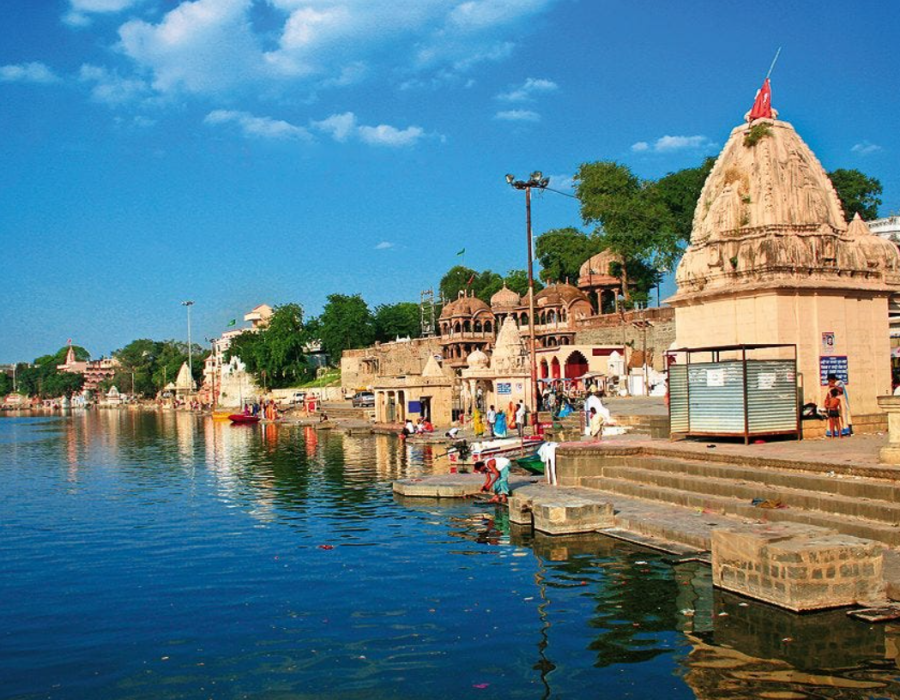The Kumbh Mela, a grandiose spiritual pilgrimage, is a vibrant celebration of faith, devotion, and cultural diversity. Among the sacred riverside destinations that host this extraordinary event, Ujjain stands out as a significant center for this mystical congregation. The Ujjain Kumbh Mela, held once every 12 years, draws millions of pilgrims, sages, and seekers from across the globe, creating an awe-inspiring spectacle that transcends the boundaries of time and space.
Historical Significance:
Ujjain, situated on the banks of the Shipra River, holds immense historical and religious importance in the Hindu tradition. The city is one of the seven sacred cities believed to provide moksha, or liberation from the cycle of birth and death. The Kumbh Mela in Ujjain is deeply rooted in ancient scriptures and legends, with its origins tracing back to the churning of the cosmic ocean (Samudra Manthan) mentioned in Hindu mythology.
The Confluence of Faith and Culture:
The Kumbh Mela is not merely a religious gathering; it is a melting pot of diverse cultures, traditions, and spiritual philosophies. Pilgrims from different corners of the country, and even the world, come together to participate in rituals, take holy dips in the sacred river, and seek blessings from revered saints and sadhus. The atmosphere is charged with the resonance of devotional hymns, the fragrance of incense, and the vibrant colors of traditional attire.
The Rituals and Ceremonies:
The central ritual of the Kumbh Mela is the holy dip, known as "Shahi Snan," which pilgrims believe cleanses them of sins and ushers in spiritual enlightenment. The auspicious timing of the Shahi Snan is determined by astrological calculations and aligns with specific planetary configurations. The sadhus, also known as Naga Babas, lead the processions, their naked bodies covered in ash, symbolizing their renunciation of worldly attachments.
Besides the holy dip, the Kumbh Mela in Ujjain hosts a myriad of ceremonies, discourses, and cultural events. Renowned spiritual leaders and gurus deliver discourses on various aspects of life, philosophy, and spirituality, attracting a diverse audience eager to absorb ancient wisdom.
The Impact on Ujjain:
The hosting of the Kumbh Mela brings both spiritual and economic benefits to Ujjain. The city undergoes extensive preparations, with temporary infrastructure, accommodations, and facilities constructed to accommodate the massive influx of pilgrims. The local economy witnesses a significant boost as businesses thrive, and artisans showcase their crafts. Additionally, the Kumbh Mela promotes Ujjain as a spiritual and cultural destination on a global scale, fostering tourism and cultural exchange.
Challenges and Conservation Efforts:
Hosting an event of this magnitude poses challenges, including crowd management, sanitation, and environmental impact. However, authorities and organizers have become increasingly aware of the need for sustainable practices. Efforts are made to implement eco-friendly measures, waste management systems, and promote responsible tourism to ensure the Kumbh Mela leaves a positive legacy for both the city and the environment.
Conclusion:
The Ujjain Kumbh Mela is not just a religious gathering but a profound spiritual experience that unites people from diverse backgrounds under the umbrella of faith. It symbolizes the rich tapestry of India's cultural heritage, showcasing the coexistence of tradition and modernity. As the sacred waters of the Shipra River witness this extraordinary congregation, the Ujjain Kumbh Mela continues to be a testament to the enduring power of spirituality and collective devotion.
For more details, visit us:





Comments